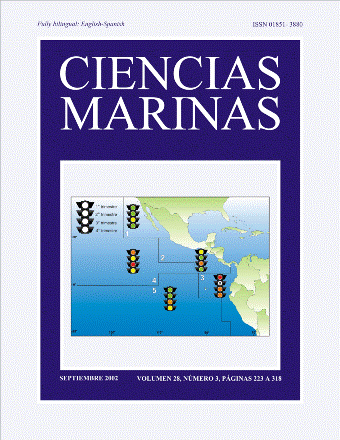Effect of dark and salinity treatment in the yield and quality of agar from Gracilaria cornea (Rhodophyceae)
Main Article Content
Abstract
The alkali treatment used previous to agar extractions from the Gracilaria genus reduces, among other reactions, the sulphate content and improves the gel strength; however, at an industrial level it requires expensive effluent processing to reduce its polluting charge. The red alga Gracilaria cornea was cultivated under dark and salinity treatments to replace this alkali treatment. The different treatments tested were: (a) darkness and 33‰ salinity for 8 days, [dark treatment]; (b) darkness and 50‰ salinity for 4 days, followed by darkness and 25‰ salinity for 4 days, [4+4]; and (c) darkness and 50‰ salinity for 8 days, followed by darkness and 25‰ salinity for 4 days, [8+4]. The treatment [4+4] increased the agar yield in 26% (from 36.6 to 46.1%). All treatments reduced the sulphate content of the agar in approximately 24% when compared with agar obtained without any treatment. For G. cornea the [4+4] treatment might become in the future an additional treatment to a mild alkali treatment using less alkaline reagents for agar extraction.
Downloads
Article Details
This is an open access article distributed under a Creative Commons Attribution 4.0 License, which allows you to share and adapt the work, as long as you give appropriate credit to the original author(s) and the source, provide a link to the Creative Commons license, and indicate if changes were made. Figures, tables and other elements in the article are included in the article’s CC BY 4.0 license, unless otherwise indicated. The journal title is protected by copyrights and not subject to this license. Full license deed can be viewed here.

